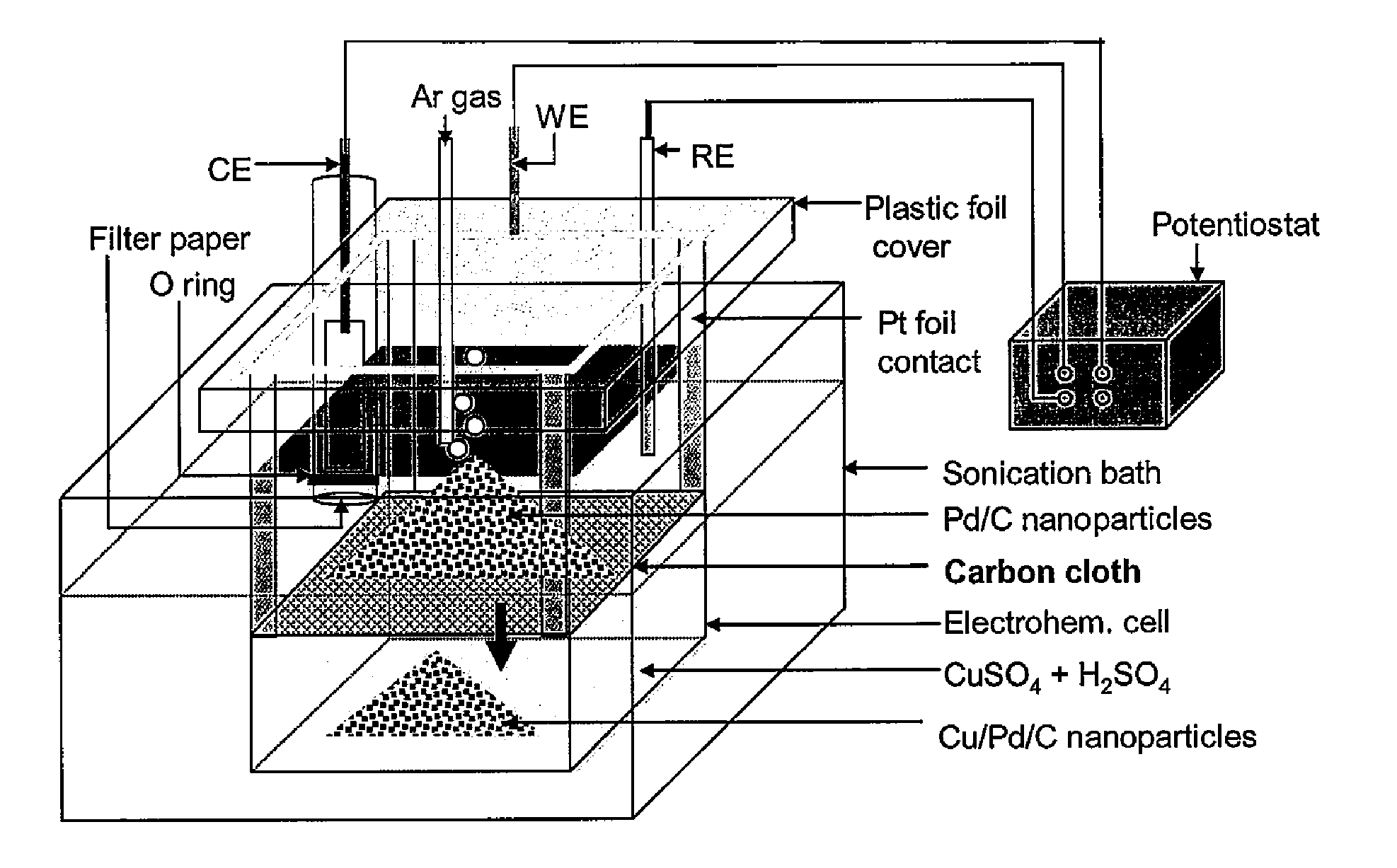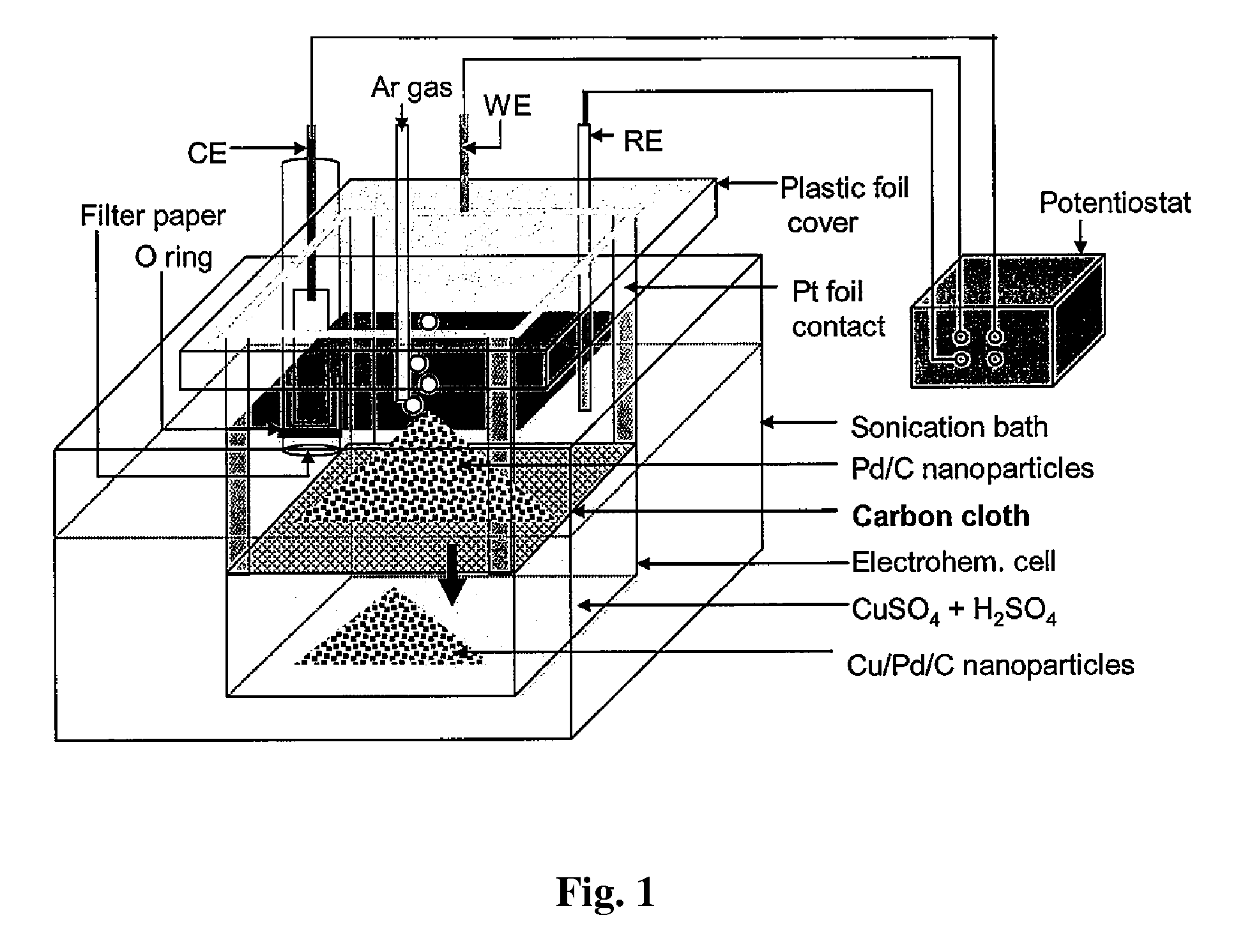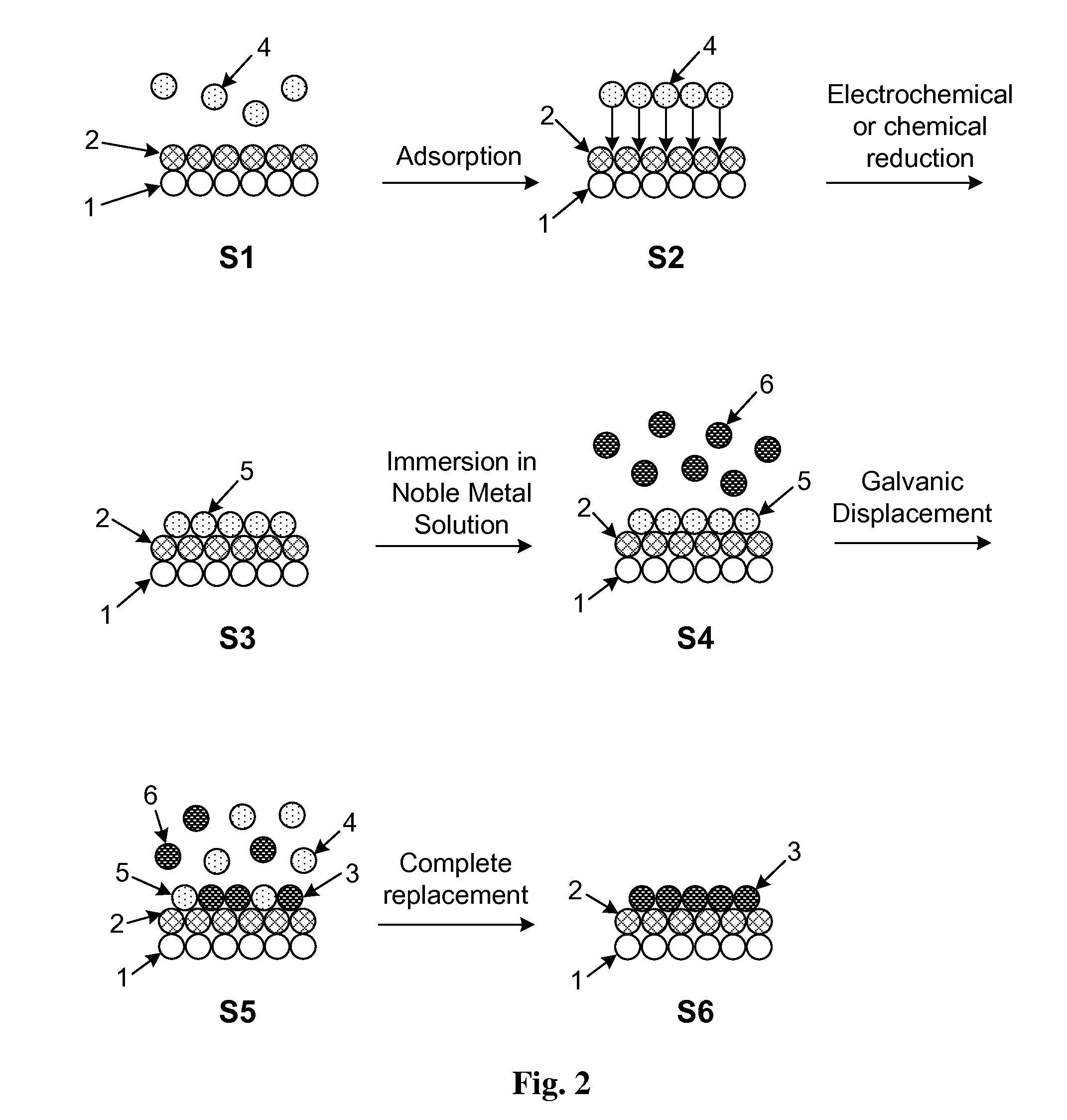Method and Electrochemical Cell for Synthesis and Treatment of Metal Monolayer Electrocatalysts Metal, Carbon, and Oxide Nanoparticles Ion Batch, or in Continuous Fashion
a technology of electrocatalysts and electrochemical cells, which is applied in the direction of cell components, metal/metal-oxide/metal-hydroxide catalysts, physical/chemical process catalysts, etc., can solve the problems of high cost, poor stability under cyclic loading, and inability to successfully implement commercially available energy conversion devices
- Summary
- Abstract
- Description
- Claims
- Application Information
AI Technical Summary
Benefits of technology
Problems solved by technology
Method used
Image
Examples
example 1
[0077]The present invention may be illustrated by way of exemplary embodiments. In this example, the deposition process will be described with reference to deposition onto non-noble metal-noble metal core-shell nanoparticles. The core-shell nanoparticles may be initially formed using any method known in the art including, for example, those disclosed in U.S. Patent Appl. Pub. No. 2010 / 021.6632. The deposition process in Example 1 will now be described using FIGS. 2 and 3 as a reference. The nanoparticle surface in FIG. 2 shows a portion of the non-noble metal core (1) along with the noble metal shell (2). Non-noble metal ions (4) are initially adsorbed on the surface by immersing the nanoparticles in a cell comprising the appropriate concentration of non-noble metal ions (4) in step S1. The non-noble metal (4) ions are contained in solution in the electrochemical cell in FIG. 1. Typical non-noble metal ions that may be used for UPD of an initial adlayer include, but are not limited ...
example 2
[0082]A second exemplary embodiment of the present invention will now be described in detail with reference to FIG. 4 which shows the overall process flow for film growth by UPD and galvanic displacement using a cell. Initially, in step S10, particles of the desired composition, size, and shape are formed. Such particles may also be purchased from commercial vendors, such as E-TEK (39 Veronica Av., Somerset, N.J., 08873) and BASF (Germany). The particles used may be of any type onto which atomic layers of the desired material may be deposited. In a preferred embodiment the particles are of the type described in Section I above. Prior to deposition of an initial adlayer by UPD, it is necessary to prepare the cell to contain the ions of the desired UPD element as shown in step S11. The UPD element must be a material which exhibits underpotential deposition such as, for example, any of Cu, Pb, Bi, Sn, Ce, Ag, Sb, and Tl.
[0083]In step S12 the particles are introduced into the cell. This...
PUM
| Property | Measurement | Unit |
|---|---|---|
| Time | aaaaa | aaaaa |
| Molar density | aaaaa | aaaaa |
| Electric potential / voltage | aaaaa | aaaaa |
Abstract
Description
Claims
Application Information
 Login to View More
Login to View More - R&D
- Intellectual Property
- Life Sciences
- Materials
- Tech Scout
- Unparalleled Data Quality
- Higher Quality Content
- 60% Fewer Hallucinations
Browse by: Latest US Patents, China's latest patents, Technical Efficacy Thesaurus, Application Domain, Technology Topic, Popular Technical Reports.
© 2025 PatSnap. All rights reserved.Legal|Privacy policy|Modern Slavery Act Transparency Statement|Sitemap|About US| Contact US: help@patsnap.com



